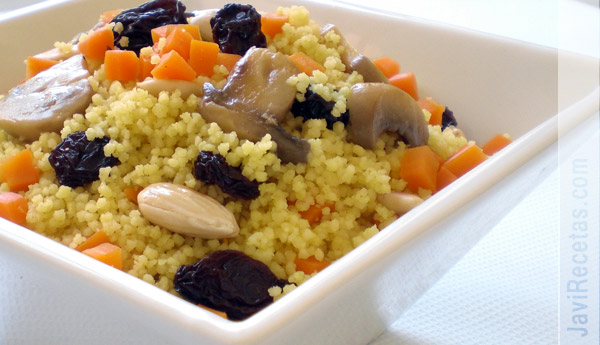When the Muslims came to the Gothic Roman Hispania, they found a poor diet scenario. The food was
scarce and was based almost exclusively on grain consumption.
The policy of the
Umayyad emirs of al-Andalus, was to give a boost to everything related to
agricultural development. The irrigation systems were improved and increased,
countless new species were introduced, large-scale cultivation was encouraged,
and production became so high that they began trading with food surpluses .It
was a real "green revolution".
Unlike the traditional
Christian trilogy of wheat, oil and wine, the Andalusians created new eating
habits in which
vegetables were not only the foundation, but the essential element. The Andalusians could eat fresh vegetables all year
round
Legumes,
soybeans, chickpeas, lentils and beans were considered highly nutritious food, the
flatulence that these produce was reduced by the use of aromatic plants.
As for fruits, since the
eleventh century in Al-Andalus they had almost the same fruits as we have in
our fields today. The most consumed fruits were watermelon, coming from Persia
and the pomegranate, which came from Syria. This fruit eventually became the symbol of
Muslim Spain. Many other fruits such as the quince or the apricot, coming from very
different places, were introduced and adapted to the climate. The spices were widely used in the cuisine
of Al-Aldalus. Cinnamon was brought from China as well as saffron, cumin, sesame seeds (or
sesame), coriander, nutmeg and anise (anisum) These spices apart from being
used as a condiment in the preparation of various dishes, were exported from
Al-Andalus to the rest of Europe and even to Egypt and North Africa, which
favored the development of the economy.
The Andalusians are also responsible for the introduction of cane sugar in
Europe, which replaced honey as a sweetener, sugar can also
be used to keep certain perishable foods such as fruits preserved to last
longer.
Cereals were used to make, not only
bread, but also porridge, semolina and
soup.
They used wheat flour to make dough/ pasta which, contrary to the
belief that it was Marco Polo who introduced this in the West from China, it
actually came from North Africa.
A very popular dish was the noodles. They were cooked with lamb or milk and honey as a dessert.
But undoubtedly the most appreciated
way to use wheat flour was, in form of semolina, in the preparation of the
well-known couscous dish of Berber
origin, which was introduced by the Moors in the thirteenth century. Soon, it became
one of the most prestigious meals in the Moorish kingdom of Granada
The meat that the Hispano ate the most was lamb. It was cooked in many different ways: roasted, stewed or fried.
They also used mincemeat to
make their famous lamb and pork sausages: the meatballs.
Fish was also appreciated, both saltwater
and freshwater.
It was prepared in different
ways: fried in olive oil, stuffed, stewed and pickled. The most popular were mullets,
salmon, sardines, anchovies ,and tuna. Some species of fish were preserved only
by applying salt, removing the bones and
exposing them to the sun;
others were macerated in salt and vinegar and eaten
cold (pickles).
Our account of the
contributions of Al Andalus to our cuisine would not be complete if we didn´t
make any reference to the modes of "good eating".
Several milestones marked the
Andalusian "art of fine
dining"; in the ninth century, with the arrival in Al-Andalus
Caliphate Alhaken II of the Kurdish "Ziryab" coming from Baghdad, the particular order in
which the dishes are served at the table, was established : first, soup; then,
fish or meat and finally desserts. It was also this man who introduced the use
of spoons and glasses on the table.
1.
What was the diet
of the visigoth Roman Hispania mainly based on before the arrival of the
Muslims?
1.
Fruit and vegetables
2.
Cereals
3.
Legumes
4.
Meat
2.
What kind of food became the basis of the al
Andalus diet?
1.
Fruits and vegetables
2.
Meat
3.
Sweets
4.
Dried fruits and nuts
3.
What fruit has
become the symbol of Al Andalus?
1.
Watermelon
2.
Pomegranate
3.
Melon
4.
Apricot
4.
Where does
dough/pasta come from?
1.
China
2.
Japan
3.
Italy
4.
North Africa
5.
Where does
couscous come from?
1.
North Africa
2.
Syria
3.
Arabia
4.
Egypt
6.
What is the most
used meat in the Andalusian cuisine?
1.
Pork
2.
Beef
3.
Chicken
4.
Lamb
7.
What well-known
personality brought to the peninsula the usual order of the dishes, which we
still use today?
1.
Abderramán I
2.
Almanzor
3.
Ziryab
4.
Alhaken II
8.
What other
innovations did he introduce in the Cordoba Caliphate court?
1.
Fork
2.
Spoon
3.
Knife
4.
Silverware





.jpg)










